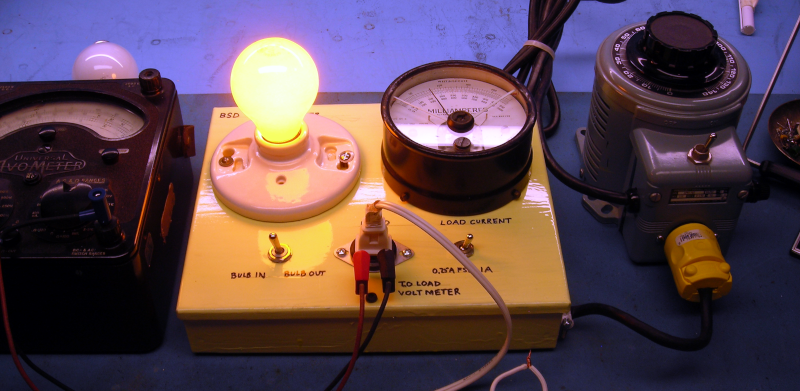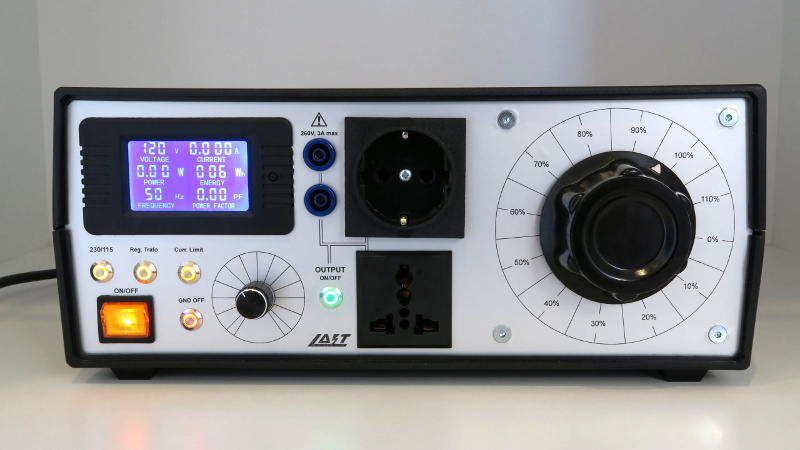Bright Lightbulb Saves Old Radios

If you work on old equipment, you know that there’s always that tense moment when you first plug it in and turn it on. No matter how careful you have …read more Continue reading Bright Lightbulb Saves Old Radios
Collaborate Disseminate

If you work on old equipment, you know that there’s always that tense moment when you first plug it in and turn it on. No matter how careful you have …read more Continue reading Bright Lightbulb Saves Old Radios

It’s no surprise that many hardware hackers avoid working with AC, and frankly, we can’t blame them. The potential consequences of making a mistake when working with mains voltages are …read more Continue reading Custom Isolated Variac is Truly One of a Kind
When debugging ordinary low-voltage circuitry, you’re pretty safe: unless you have some really power-hungry devices that need a ton of current, there aren’t that many truly bad things that can happen, so you can take a lot of liberties with electrical-safety rules. With mains-powered devices, you don’t have this luxury, …read more
Continue reading Protect Yourself — And Your project — While Working With Mains Power
Switches seem to be the simplest of electrical components – just two pieces of metal that can be positioned to either touch each other or not. As such it would seem that it shouldn’t matter whether a switch is used for AC or DC. While that’s an easy and understandable assumption, it can also be a dangerous one, as this demo of AC and DC switching dramatically reveals.
Using a very simple test setup, consisting of an electric heater for a load, a variac to control the voltage, and a homemade switch, [John Ward] walks us through the details of …read more
If you’be been hacking and making long enough, you’ve probably run into a situation where you realize that a previous project could be improved with the addition of technology that simply wasn’t available when you built it. Sometimes it means starting over from scratch, but occasionally you luck out and can shoehorn in some new gear without having to go back to the drawing board.
The two isolated variacs that [nop head] built were already impressive, but with the addition of the ESP8266 he was able to add some very slick additional features which really took them to the next …read more
One of [Bithead]’s passions is making Star Wars droids, and in the process of building the outer shell for one of them he decided to use hot wire foam cutting and make his own tools. Having the necessary parts on hand and having seen some YouTube videos demonstrating the technique, [Bithead] dove right in. Things didn’t go exactly to plan but happily he decided to share what did and didn’t work, and in the end the results were serviceable.
[Bithead] built two hot wire cutters with nichrome wire. The first was small, but the second was larger and incorporated some …read more
![]() Continue reading Things Learned From Hot Wire Cutting a Droid’s Body
Continue reading Things Learned From Hot Wire Cutting a Droid’s Body